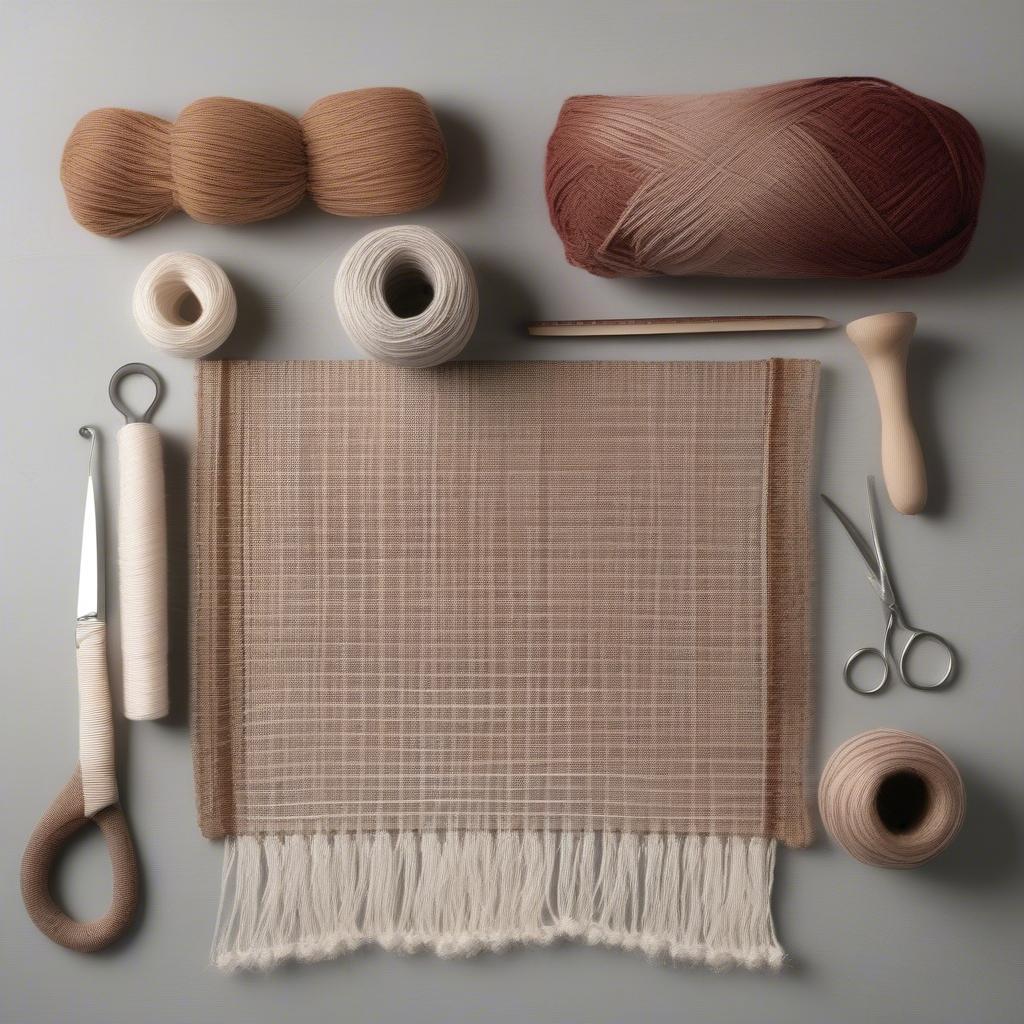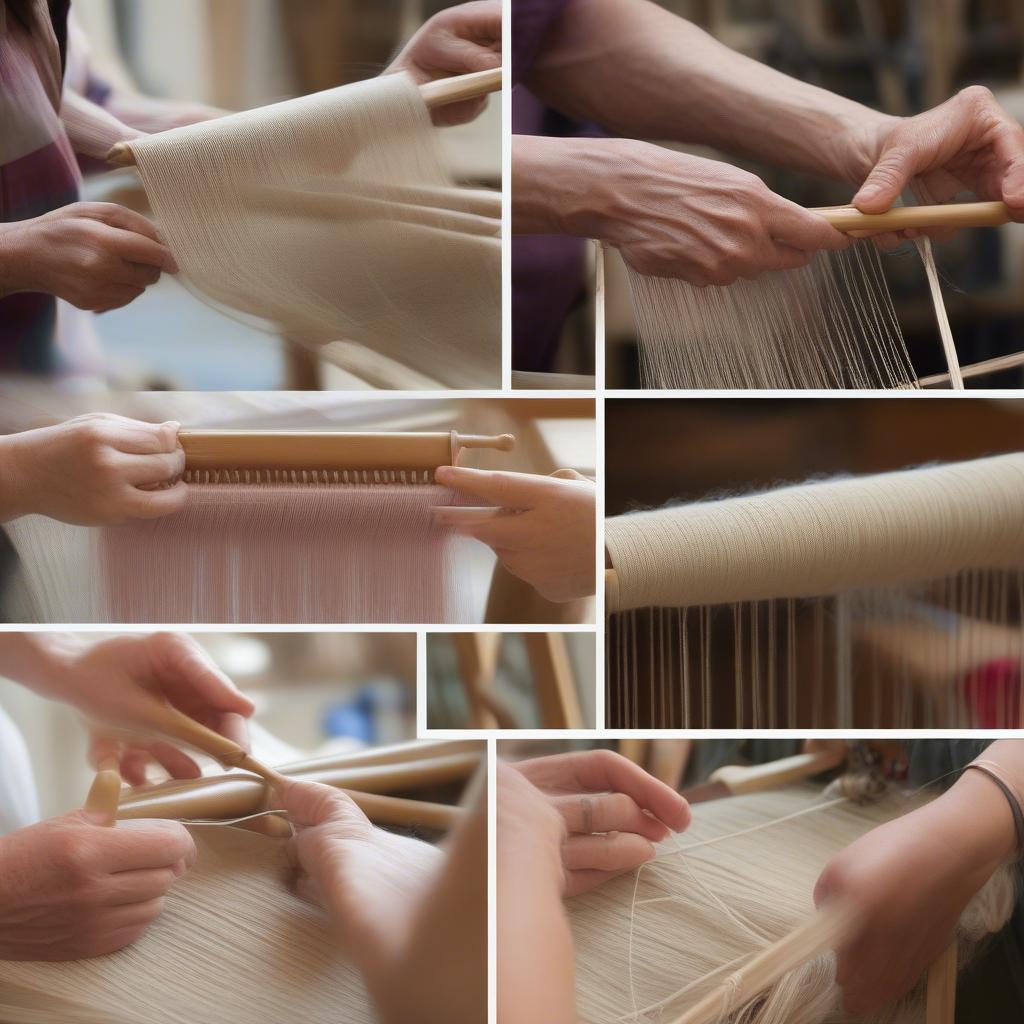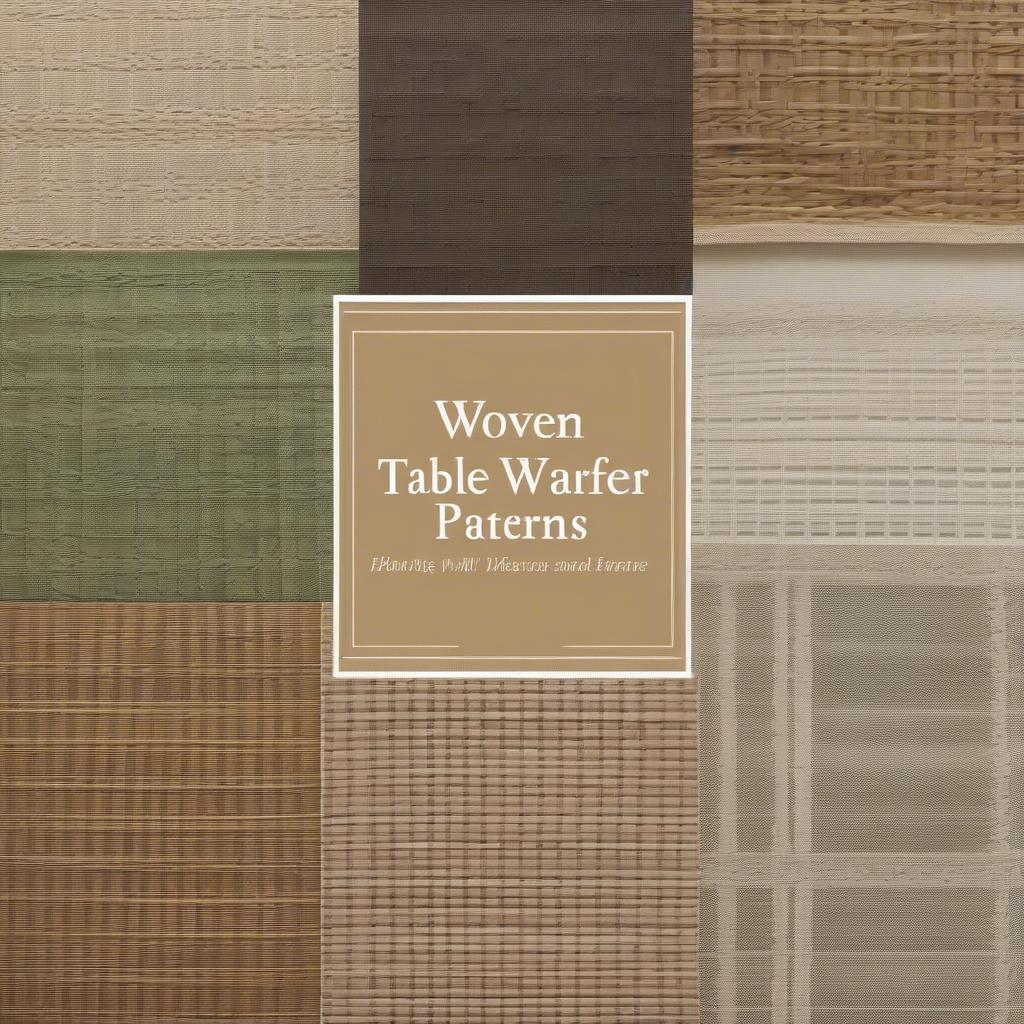Weave Table
How to Weave a Table Runner
Learning How To Weave A Table Runner opens up a world of creative possibilities, allowing you to add a personalized touch to your home decor. Whether you’re a seasoned weaver or just starting out, this guide will provide you with the knowledge and inspiration to create a beautiful, handcrafted table runner.
Getting Started with Weaving a Table Runner
Before diving into the actual weaving process, it’s essential to gather your materials and familiarize yourself with the basic techniques. Choosing the right materials will greatly influence the final look and feel of your table runner.
Choosing Your Materials
- Yarn: Consider the weight, texture, and color of your yarn. Natural fibers like cotton and linen offer a classic look, while wool adds warmth and texture. For a more rustic feel, consider using jute or twine. Experiment with different yarn combinations to create unique effects.
- Loom: While a large floor loom offers the most versatility, smaller rigid heddle looms or even cardboard looms are perfect for beginners and creating narrower table runners.
- Shuttle: Used to carry the weft yarn across the warp threads.
- Scissors: For trimming yarn ends.
- Comb: For beating the weft yarn into place.
 Essential Materials for Weaving a Table Runner
Essential Materials for Weaving a Table Runner
Basic Weaving Techniques
- Warping the Loom: This involves preparing the longitudinal threads (warp) on your loom. The warp provides the foundation for your weaving. Ensure the warp threads are evenly spaced and taut.
- Shedding: Creating a space between the warp threads through which the weft yarn will pass. This is often done using heddles or levers on a loom.
- Picking: Passing the weft yarn (carried by the shuttle) through the shed.
- Beating: Using a comb or beater to compact the weft yarn against the previous rows, creating a solid weave.
You can find inspiration for different table runner styles from resources like a dorset weave table runner or ethnic table runners weave.
Weaving Your Table Runner: Step-by-Step Guide
Now that you understand the basics, let’s walk through the process of creating your table runner.
- Plan Your Design: Determine the desired length and width of your table runner. Sketch your design, considering color patterns and any special details you want to incorporate.
- Warp Your Loom: Follow the instructions specific to your loom to warp the threads. Ensure the warp is evenly tensioned.
- Begin Weaving: Using your chosen weaving technique, begin passing the weft yarn through the shed. Pay attention to your design and maintain even tension throughout.
- Continue Weaving: Continue weaving, following your design and ensuring consistent tension. Regularly check for any errors or loose threads.
- Finishing: Once you reach the desired length, carefully remove the woven fabric from the loom. Weave in any loose ends and trim excess yarn.
 Step-by-Step Weaving Process for a Table Runner
Step-by-Step Weaving Process for a Table Runner
Choosing the Right Pattern
The pattern you choose will significantly impact the look of your table runner. Simple patterns are ideal for beginners, while more complex patterns allow for greater creativity. Exploring different options like an open weave burlap table runner can provide design inspiration.
Simple Patterns for Beginners
- Plain Weave: The most basic weave, creating a solid, even fabric.
- Twill Weave: Creates a diagonal pattern, adding texture and interest.
Advanced Weaving Techniques
- Basket Weave: Creates a checkered pattern.
- Lace Weave: Creates intricate, openwork designs.
“A well-chosen pattern can elevate a simple table runner to a piece of art,” says renowned textile artist, Emily Carter. “Experimenting with different patterns and yarn combinations is key to developing your own unique weaving style.”
 Variety of Table Runner Patterns
Variety of Table Runner Patterns
Conclusion
Learning how to weave a table runner is a rewarding experience that allows you to create a beautiful and functional piece of art for your home. By following these steps and experimenting with different materials and patterns, you can craft a table runner that reflects your personal style and adds a touch of handcrafted elegance to your dining space. Consider exploring options like a mountain weave table runner or mountain weave table runners for further inspiration.
FAQ
- What type of yarn is best for a table runner?
- What size loom do I need?
- How do I fix a weaving mistake?
- What is the easiest weave for beginners?
- How do I wash a handwoven table runner?
- Where can I find weaving patterns?
- How long does it take to weave a table runner?
Need assistance? Contact our 24/7 customer service hotline at +84 388 951 999. You can also visit our offices in Hanoi, Vietnam or Tech Avenue, Suite 12, San Francisco, CA 94105, USA.
